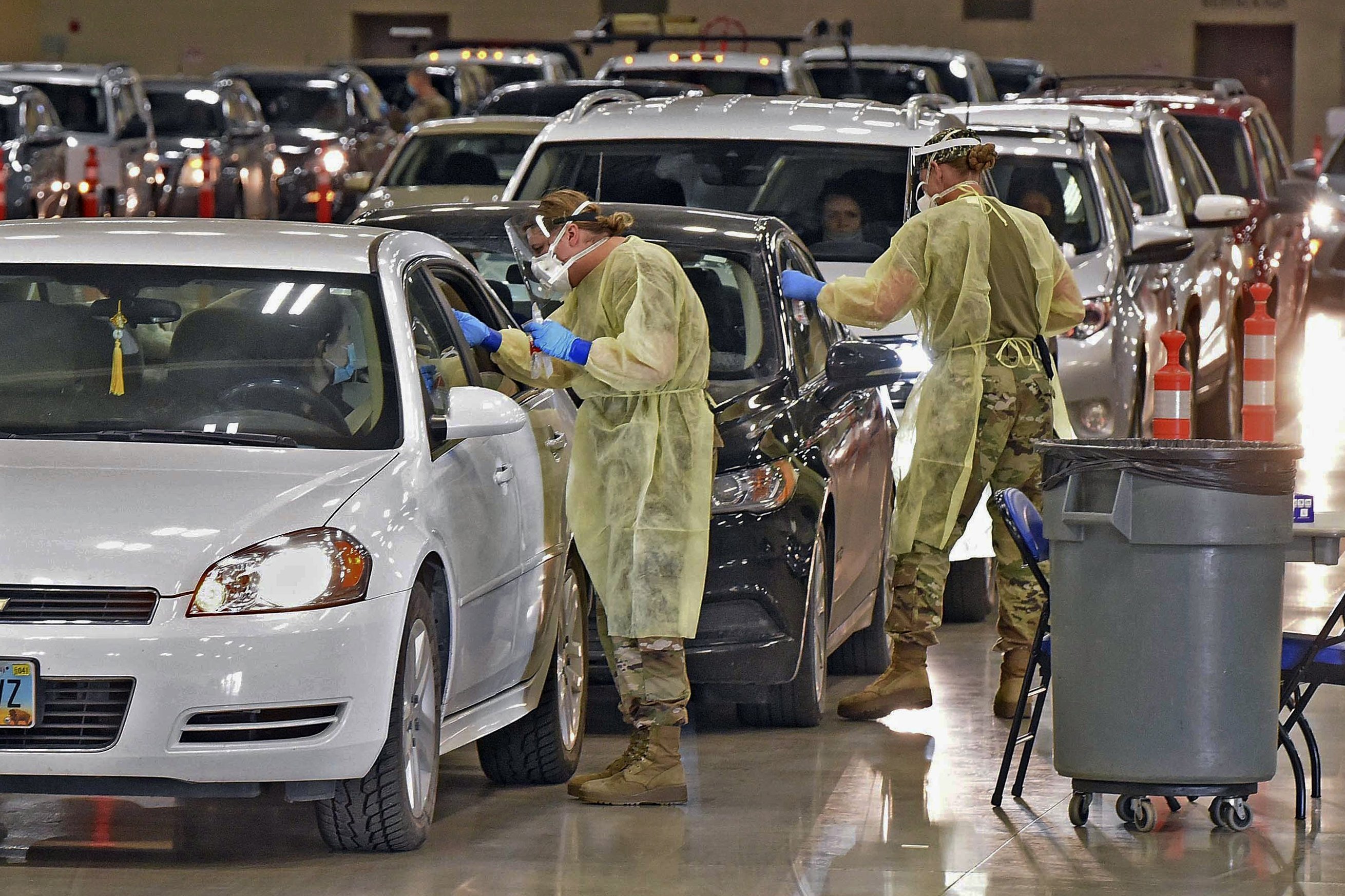
SIOUX FALLS, SD (AP) – As much of the country faces rising virus numbers, a reprieve of a devastating wave of coronavirus in the Upper Midwest has provided cautious relief to health officials, although they are concerned that infections remain high and that holiday gatherings rekindle the worst outbreaks of the pandemic.
States in the Northern Midwest and Great Plains saw worst rates of coronavirus infections in the nation in the weeks leading up to Thanksgiving, with hospitals going beyond capacity and leading to states like North Dakota, South Dakota, Minnesota, Iowa and Wisconsin that reported some of the highest per capita deaths in November.
But over the past two weeks, those states have seen their average daily cases drop, with declines ranging from 20% in Iowa to a whopping 66% in North Dakota, according to Johns Hopkins researchers. Since mid-November, the entire region has returned to levels similar to October.
“We’re in a place where we’ve controlled the fire, but it would be really easy to rekindle it if the conditions were right,” said Ryan Demmer, an epidemiologist at the University of Minnesota School of Public Health.
For a region that foreshadowed the waves of viruses now ravaging much of the country, the positive direction in the Midwest offers hope that people can rally to take virus precautions seriously as they wait for vaccines during what experts believe will be the final months of the pandemic.
Governors have used the diminishing numbers to justify their diverse approaches to fighting the pandemic, sometimes even jousting. In Minnesota, Governor Tim Walz, a Democrat, defended the maintenance of some restrictions in effect until early January, saying the limits for bars and restaurants work. In neighboring South Dakota, Republican Governor Kristi Noem has argued the opposite, using the recent decline in numbers in her state to argue those mask mandates make no difference.
But some epidemiologists believe that the most compelling factor for many who redoubled their efforts to prevent infections may be that they have experienced the virus on a personal level. As the pandemic crept into Midwestern communities, more people had loved ones, friends, or acquaintances who got sick or died.
“It’s a foxhole religion – the whole thing becomes much more real when the man next to you is shot,” said Dr. Christine Petersen, the director of the Center for Emerging Infectious Diseases at the University of Iowa. “Suddenly your local hospital is full and your sister, aunt or grandmother is in the hospital.”
According to data from the COVID Tracking Project, about one in 278 people in northern states, from Wisconsin to Montana, needed hospital care for COVID-19. These experiences strike in close-knit communities.
The virus outbreak was so widespread in early November that almost everyone knows someone seriously affected by COVID-19, said Dr. James Lawler of the University of Nebraska Medical Center’s Global Center for Health Security.
“That seems to be bringing things home in a way that just talking wasn’t there before,” he said, noting that he has seen more people wear face masks, as well as avoiding gatherings, parties and indoor dining.
Until the fall, the Upper Midwest had not experienced the widespread outbreaks and high death rates that other parts of the country had experienced during the first months of the pandemic. Many were lax measures to contain the virus. Republican governors in the region eschewed government mandates for wearing masks or other efforts to prevent infections.
Many health experts warned that the region was ripe for widespread infections, especially as the weather cooled and people gathered inside, allowing the coronavirus to spread more easily.
“Once the snowball started, everyone fell,” said Petersen. ‘We knew this was coming. It was the ones who took the precautions and doubled down who did a little better, but we knew it was going to be tough anyway. “
Petersen attributed the renewed efforts to slow infection to a combination of factors: warnings from health officials and medical personnel that hospitals were filled; some Republican governors issuing orders to wear masks; and the lived experience of the pandemic. Other experts say some groups of people, such as those who work in meat packaging plants where infections were widespread, had had such high rates of infections that the virus has slowed down.
But across the region, many feared that the success in avoiding a Thanksgiving spike could be reversed by Christmas and New Year’s celebrations. Petersen was concerned that people had decided to forgo Thanksgiving gatherings just to have family celebrations at Christmas. As a Midwesterner, she recognized that it was hard to resist the pull of getting together with family on vacations was hard.
“I hope many of us won’t feel guilty in a few weeks,” she said.
___
Funk reported from Norfolk, Nebraska. Steve Karnowski in Minneapolis contributed to this report.